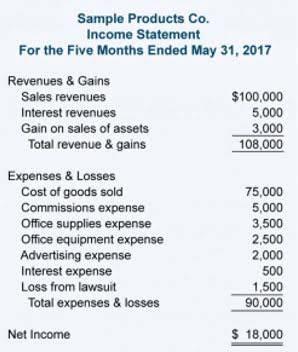The entire idea is to be on your game and make as few mistakes as possible. If you do not have the labor available, there are many brands of accounting software that can also keep an eye on things. A custom accounting system with robust AP automation is the key to making fewer mistakes. The vast amount of your payables should be in the 0-to-30-days-old category. Since most invoices are due within 30 days, you don’t want many outstanding invoices unpaid beyond 30 days.
Key Benefits of AP Automation
Most of the balance on a five-year loan, for example, is categorized as a long-term (noncurrent) liability. When you sign up for Centime you’ll be assigned a Customer Success Manager who is dedicated to helping you get the most out of Centime. Our Customer Success team is based in the USA and available Monday through Friday from 8am to 6pm Eastern Time. Interests which are related to the sector you are applying to, or which show transferable skills like leadership or teamwork, can worth listing.
- When a company purchases goods and services from a supplier or creditor on credit that needs to be paid back quickly.
- Implementing an automated accounts payable process is a simple yet effective way to get everyone on the AP team on the same page.
- In this article, we’ll break down how automated systems can help you overcome the most common roadblocks to an efficient AP process.
- Accounts payable (AP) are the debts owed to vendors and suppliers (recorded on a company’s balance sheet) to which the company has received goods or services purchased on credit, but hasn’t paid the supplier.
- Many AP departments have invested in automation tools that are incomplete or only address part of the process.
Human errors
Plus, the speed of AI-powered invoice processing lets you capture early payment discounts to boost your bottom line. AI’s precise data extraction also minimizes errors that lead to costly late fees. AP departments face increasing pressure to prevent fraud while maintaining compliance with various regulations and internal controls. Teams must carefully validate invoices, verify vendor information, and ensure proper payment authorization while managing the risk of duplicate payments and fraudulent invoices. Maintaining audit trails, documenting policy exceptions, and keeping up with changing regulations adds another layer of complexity to daily operations. The challenge becomes even greater when working with manual processes that make it difficult to implement consistent controls and track compliance.
Explore our full suite of Finance Automation capabilities
When a company purchases goods and services http://dokshicy.info/doska/id_post.php?id=2188 from a supplier or creditor on credit that needs to be paid back quickly. The accounting entry to record this transaction is known as Accounts Payable (AP). If duplicate payments are not addressed, it can be highly costly for organizations.
Use consistent formats for invoices, purchase orders, and receipts to make verification easier. This also helps when training new staff, ensuring everyone follows the same procedures. This is simply in reference to https://tiecenter.ru/obshhestvo/how-to-increase-views-and-visits-to-your-channel-on-youtube.html the fact that the account represents the company’s short-term liabilities.
Integrated Payment Processing
Electronic accounts payable document management systems improve financial operations’ efficiency and contribute to a more sustainable business model. Efficient management of these documents is crucial—especially for companies processing hundreds or thousands of invoices monthly. For instance, a mid-sized business handling 1,000 invoices a month could quickly accumulate 3,000 documents, including POs, invoices, and receipts. A digital AP document management system automates this process, reducing manual effort and improving accuracy. With accounts payable document management software, companies can turn a once cumbersome, error-prone task into an efficient, automated system. This software simplifies record-keeping, ensuring every document is secure, organized, and audit-ready.
Their main goal is to ensure timely invoice payment, foster positive relationships with the company’s suppliers, and facilitate the appropriate allocation of cash payments to keep the business running smoothly. Efficiently managing accounts payable helps businesses build strong relationships with vendors and suppliers while maintaining positive cash flow. In the coming years, AP processes are set to undergo a major transformation.
- Once payment is made, the invoice is digitally filed for easy future reference and to maintain an audit trail.
- By integrating AI and its subset technologies — such as computer vision, accurate and efficient top-to-bottom automation becomes an actual possibility.
- NetSuite is an end-to-end solution that excels in managing your accounts receivable.
- The AP process begins with the receipt of an invoice from a vendor, signaling a request for payment for goods or services rendered.
- Although the payment may not be immediate, the expense is recognized in your financial records at the time of purchase.
- Thanks to their centralized digital platforms, automated accounts payable processes make it easy to handle vendor queries, open items, and approvals.
- It ensures every transaction is recorded correctly and quickly accessible when needed, which is crucial during audits or financial reviews.
- In a company, an AP department is responsible for making payments owed by the company to suppliers and other creditors.
- To avoid potential difficulties, accounts payable staff should be informed about the recent supplier information.
- Andrew Pery is an AI Ethics Evangelist at intelligent automation company ABBYY.
- The team prepares and reviews the necessary documents and designated managers approve invoices before initiating payment.
The AP team then matches these documents to ensure payments are made only for what was received. Once the payment is completed, a receipt serves as proof of the transaction. Successful routing into the General Ledger (GL) ensures accurate financial reporting and accounting. This means coding invoices with the correct account and invoice numbers and entering them into the company’s accounting software, to maintain accurate bookkeeping and financial analysis. Accounts Payable and Receivable are usually different departments in larger companies.
Vendor Management Strategies
Join BC Krishna, CEO of Centime, to explore how AR automation can transform your collections process, improve cash management, and delight your customers. Invoice Processing – Managing the end-to-end process of receiving, verifying, http://motorzlib.ru/news/item/f00/s05/n0000522/index.shtml and processing invoices in a timely and accurate manner. Andrew Pery is an AI Ethics Evangelist at intelligent automation company ABBYY.






